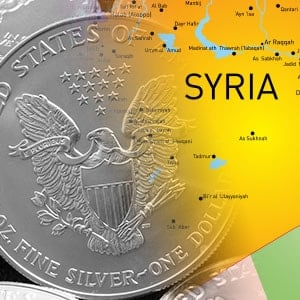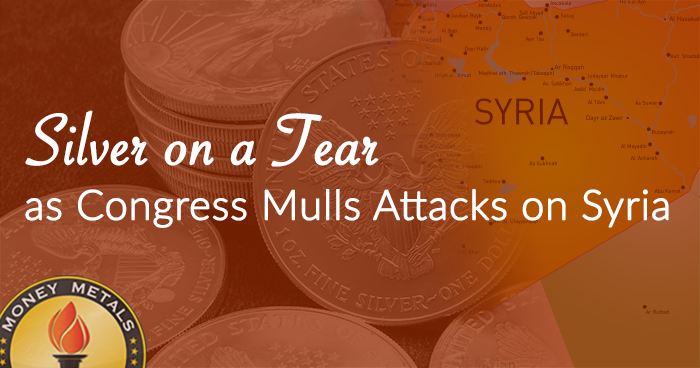 Over the holiday weekend, President Barack Obama announced he would seek Congressional approval for a military strike on Syria. The news didn't have much impact on gold prices in international trading on Monday (while U.S. markets were closed for Labor Day). Silver, however, gained more than 2% ahead of Tuesday's market open to reclaim the ground given up last week.
Over the holiday weekend, President Barack Obama announced he would seek Congressional approval for a military strike on Syria. The news didn't have much impact on gold prices in international trading on Monday (while U.S. markets were closed for Labor Day). Silver, however, gained more than 2% ahead of Tuesday's market open to reclaim the ground given up last week.
September trading kicks off on the heels of a pivotal August – a month that saw silver lead a breakout in precious metals prices. Last month, silver gained a whopping 20%! Gold and platinum posted more modest single-digit gains, while palladium gave up practically all of its monthly gains with a 3.6% drop last week.
As silver investors celebrated in August, stock market bulls did the opposite. The Dow Jones Industrial Average posted its worst monthly decline (-4.5%) since May 2012. Treasury bond prices also fell in August, marking their fourth straight month of losses.
Are You Truly Diversified?
The stark contrast in the performance of hard assets versus paper assets last month points to the importance of diversification. Gold and silver often exhibit an inverse correlation to conventional investments such as stocks and bonds. More importantly, precious metals in physical form provide a buffer against the systemic risks of holding assets in financial accounts – from counterparty risk to currency risk to the risk of having your accounts electronically invaded by hackers, identity thieves, or government agencies.
In times like these, a sizeable allocation to physical precious metals is a MUST for conservative investors. Yet most investors still have near 100% risk exposure to financial assets, with either no bullion to their name or only token amounts.
To truly provide balance to your portfolio, an allocation to gold and silver bullion that represents at least 20% of your total liquid assets is advisable. That's just for diversification purposes. Those who believe precious metals at these levels offer better fundamentals and more upside potential than stocks or bonds may wish to opt for a larger target allocation.
Consider not only your retirement and brokerage accounts, but also any checking or savings accounts, life insurance policies, investment real estate, and other assets that are tied to the financial system. Then figure out how much precious metals exposure you need to counter-balance your financial assets (at whatever target percentage for precious metals exposure you choose).
Remember: Mining stocks and exchange-traded derivate instruments tied to precious metals prices are financial assets! You may find to your surprise that, like most people, you are still under-exposed to precious metals.

About the Author:
Clint Siegner is a Director at Money Metals Exchange, a precious metals dealer recently named "Best in the USA" by an independent global ratings group. A graduate of Linfield College in Oregon, Siegner puts his experience in business management along with his passion for personal liberty, limited government, and honest money into the development of Money Metals' brand and reach. This includes writing extensively on the bullion markets and their intersection with policy and world affairs.





